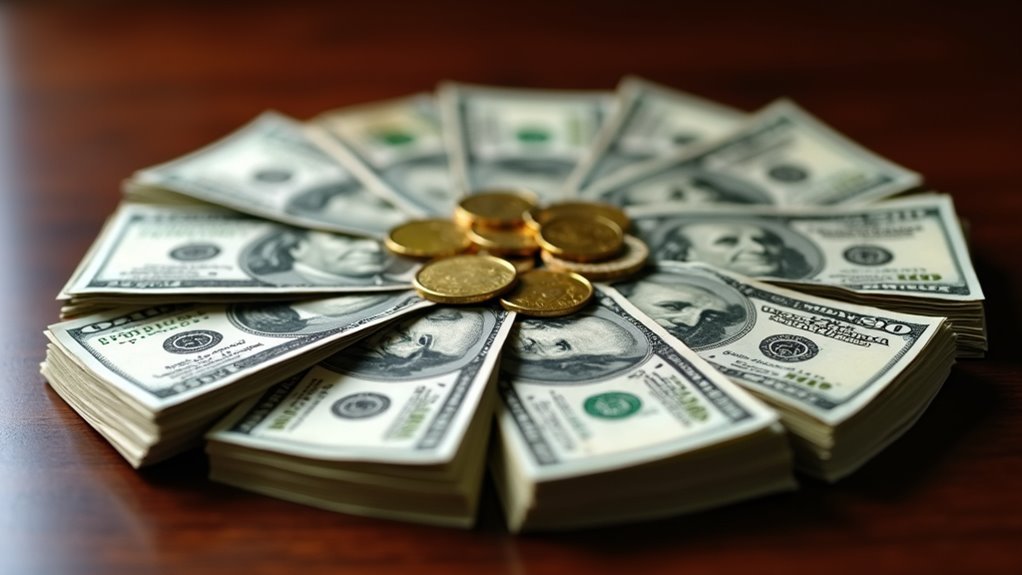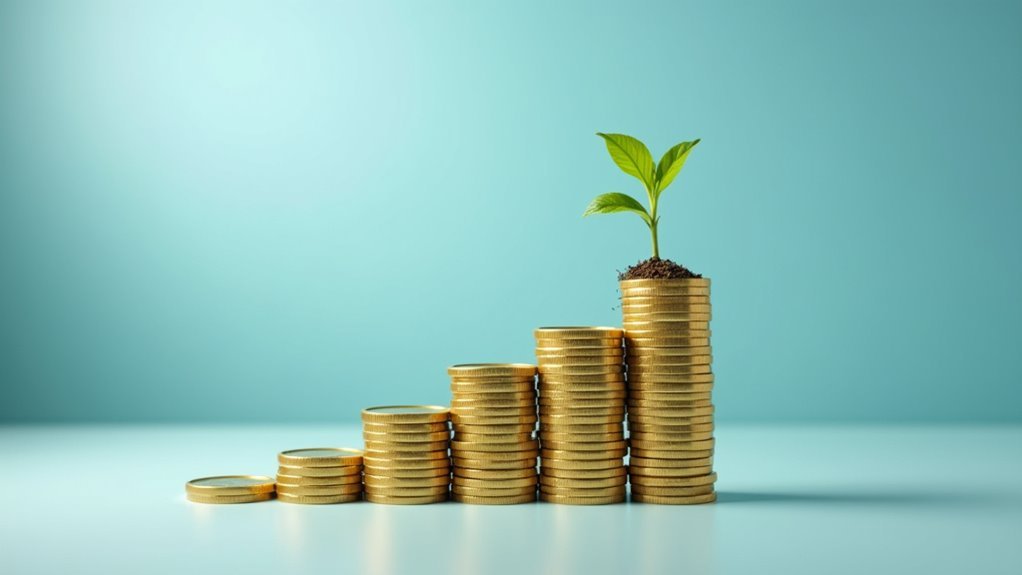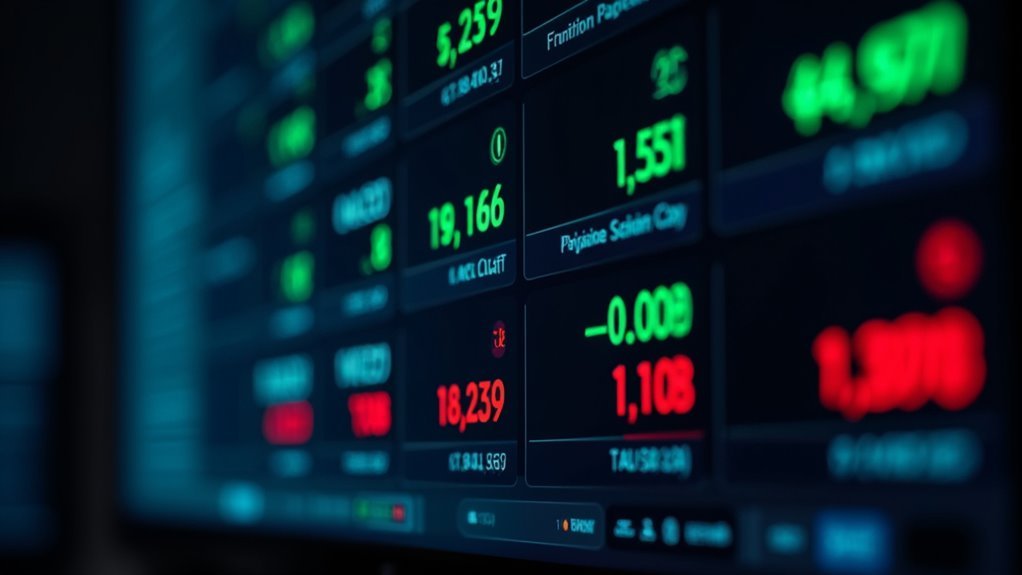Dividends are the corporate world’s way of sharing the wealth with stockholders. Companies distribute these profit-sharing payments regularly – usually quarterly, sometimes monthly. The process follows a strict timeline, from declaration to payment. Dividends come in different flavors: cash, additional shares, or even property handouts. While high dividend yields look tempting, they can mask underlying issues. Smart investors know there’s more to the dividend story than meets the eye.

Three little letters spell regular income for investors: D-I-V. Dividends are how companies share the wealth with their shareholders, typically dropping cash into investor accounts every quarter. It’s like getting a slice of the corporate pie, served up on a regular schedule. Some companies have opted to distribute their profits monthly instead of quarterly.
Not every company pays dividends, though – some prefer hoarding their cash like dragons on a treasure pile. Established companies in utilities, banking, and pharmaceuticals typically offer regular dividends.
While some companies shower shareholders with cash, others clutch their profits tightly, guarding every penny like mythical beasts.
When a company’s board of directors decides to share the profits, they’re not just being generous. Dividends signal financial health and stability. Think of it as corporate peacocking – “Look how much extra cash we have!” Many investors view dividend payments as a reliable indicator of a company’s overall financial strength.
Most companies stick to boring old cash dividends, but some get creative. Stock dividends? Here’s more shares instead of money. Property dividends? Have some real estate or inventory. Special dividends? Surprise – here’s an extra payday!
The dividend process follows a strict timeline. First comes the declaration date – the company announces its intentions. Then there’s the ex-dividend date, the cut-off point for new investors wanting a piece of the action. Miss this date, and you’re out of luck. The record date is when the company checks its shareholder list, and finally, the payment date is when the money hits accounts.
Smart investors keep an eye on metrics like dividend yield and payout ratio. These numbers tell a story about how generous a company is being with its profits and whether those payments are sustainable. A sky-high yield might look tempting, but if a company’s paying out more than it earns, something’s got to give.
Companies approach dividends differently. Some maintain rock-steady payments year after year. Others increase them regularly, while some only pay what’s left after funding their growth plans. It all depends on factors like profitability, growth opportunities, and legal restrictions.
Economic conditions play a role too – when times get tough, even the most reliable dividend payers might tighten their belts. That’s just business, folks.
Frequently Asked Questions
What Happens to Dividend Payments During a Company Merger or Acquisition?
During mergers and acquisitions, dividend payments often face uncertainty. Target company dividends typically stop after the deal closes.
The acquiring company might maintain, boost, or slash dividend levels – it’s a mixed bag. Historical data shows 51% of mergers lead to dividend increases within three years, while 22% of acquirers cut payouts in the first year.
Cross-border deals are more likely to reduce dividends.
Can Foreign Investors Receive Dividends From U.S. Companies?
Yes, foreign investors can absolutely receive dividends from U.S. companies.
It’s pretty straightforward – they just need to file a W-8BEN form with their broker.
There’s a catch though: the IRS automatically withholds 30% for taxes. The good news? Tax treaties can slash that rate to 15% or even lower for investors from certain countries.
Some industries do restrict foreign ownership, like airlines, but most U.S. stocks are fair game.
How Do Stock Splits Affect Dividend Payments?
Stock splits don’t change the total dividend amount – they just slice the pie differently.
When a company does a 2-for-1 split, each share’s dividend gets cut in half, but shareholders now own twice as many shares.
Pretty simple math. The timing matters though. If a split happens before the ex-dividend date, the new per-share amount applies.
After that date? The old dividend stands.
Why Do Some High-Profit Companies Choose Not to Pay Dividends?
Companies skip dividends for several key reasons.
Growth-hungry firms, especially in tech, plow profits back into expansion and R&D.
Financial flexibility matters too – keeping cash means being ready for opportunities or rough patches.
Tax efficiency plays a role, since capital gains often face lower rates than dividend income.
Plus, many modern investors actually prefer companies that reinvest rather than pay out profits.
Who knew?
Are Dividend Reinvestment Plans (DRIPS) Available for All Dividend-Paying Stocks?
No, not all dividend stocks offer DRIPs. Only about 650-1000 U.S. companies provide these plans – pretty selective club, right?
Most S&P 500 companies do offer them, but availability varies. Some plans are company-sponsored, others run through transfer agents or brokers.
Some firms even restrict DRIPs to existing shareholders only. Want in? Better check if your stock made the cut.








